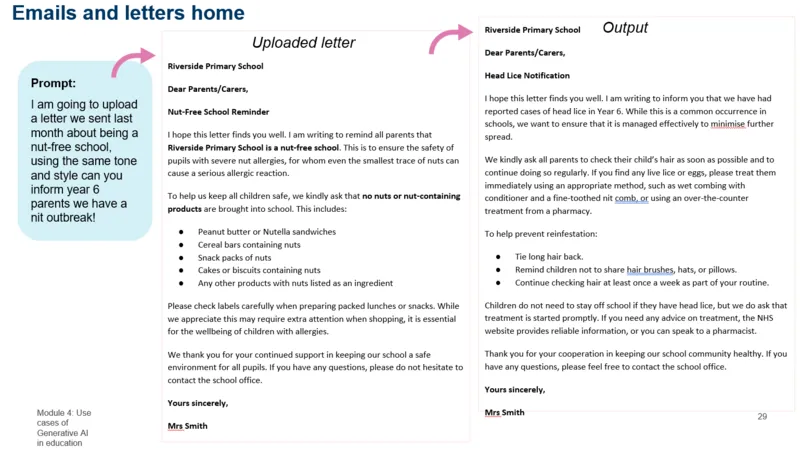How agentic AI can drive workforce transformation
1. The World Economic Forum Future of Jobs Report 2025 analyzed technological, societal and economic trends shaping the jobs of the future.
2. One positive from the report was that 'skill instability' has declined steadily as a result of training, reskilling and upskilling programmes.
3. Employers of the future workplace must develop a knowledge-first workforce and deploy workforce transformation strategies, often supported by agentic AI.
Picture this scenario:
Kate, a product designer at an automotive manufacturing enterprise, enrols for an e-learning programme to advance her career as a product engineer. After completing the basic modules, she undergoes an assessment via a chatbot. It rates her domain knowledge and shares learning material for Kate to qualify for further modules in her career trajectory. She takes a reassessment after learning advanced engineering principles and scores an A+. The e-learning platform notifies Kate’s HR manager, via email, who initiates the next action.
This scenario is likely to be the state of a majority of jobs in the future. The World Economic Forum Future of Jobs Report 2025 analyzed technological, societal and economic trends shaping the jobs of the future. It revealed that the working population is ageing and decreasing at the same time in higher-income economies, but growing in lower-income economies. Similarly, advanced technologies, such as artificial intelligence (AI), robotics and automation, are creating new opportunities for business analysts, while eliminating other roles, such as warehouse operators. These interconnected macrotrends are set to change the dynamics of the global labour pool by 2030.
Mitigating employment risksThe silver lining: 'skill instability' has declined steadily as a result of training, reskilling and upskilling programmes – from 57% in 2020 to 44% in 2023, according to the report.
A skills gap is an existential risk for both employers and a multi-generational workforce. Employers require a pool of skills of the day to drive business growth. Likewise, employees need to acquire emerging skills to shoulder bigger responsibilities and plan their career growth. A majority of enterprises implement talent development programmes to boost employability, upskill staff for higher-ranking roles and redeploy teams based on skill demand within the organization.
The integration of AI boosts learning and development programmes. AI algorithms are evolving and getting more sophisticated in terms of functionality and capability. AI systems use generalized cognitive abilities to undertake complex tasks and resolve problems in diverse domains, including education, without manual intervention. Generative AI models are pre-trained with massive domain-specific datasets to generate text, audio and visual content, which mirrors work by humans. Agentic AI takes it to the next level by blending historical knowledge and instructions in natural language with the enterprise context to make accurate decisions, act autonomously and achieve goals.
Agentic AI helps prioritize training in accordance with business needsAgentic AI helps HR professionals prioritize emerging skills during recruitment and promotions. It also helps develop a personalized training regimen to address long-term, business-specific skillsets. Further, AI-powered methodologies achieve learning goals by driving active study behaviour and cognitive engagement with course material. Moreover, knowledge retention and application are superior when learning is intuitive.
Most importantly, AI learning tools not only enhance core skills and technical expertise, but also impart essential life skills, such as analytical thinking, flexibility and agility. This is highlighted by the Pearson 2024 End of Year AI Report for Higher Education, based on research conducted by Pearson in collaboration with Morning Consult. Students using AI features in Pearson+ eTextbooks developed cognitive and critical thinking skills, while active engagement quadrupled.
In addition, AI study tools simplify tasks for tutors. A survey by Pearson and Intertwine Insights revealed that 77% of higher education faculty members plan to adopt generative AI for augmenting instruction at 2-year and 4-year institutions in the US, according to the Pearson 2024 End of Year AI Report for Higher Education. AI tools help professors create summaries, flashcards, practice tests and study guides, enabling them to better mentor students.
Designing the future of workIncreasingly, job roles and responsibilities across industries demand an amalgamation of human capabilities. Social and interpersonal skills, including the ability to lead, adapt, collaborate, motivate, empathize and influence, will be imperative to thrive in the technology-driven work environment of the future.
On the one hand, AI-driven automation of tasks, workflows and processes creates capacity, enabling enterprises to maximize efficiency, cost savings and productivity in capital and labour. A boost in workplace productivity in routine and repetitive tasks, powered by AI, can help workers in the USA save 78 million hours a week by 2026, according to the Pearson Reclaim the Clock: How Generative AI Can Power People at Work Skills Outlook series.
On the other hand, AI augments the skills set of younger and less-experienced knowledge workers. It allows an autonomous, self-governing work style for skilled professionals. The workforce ecosystem is expanding to include hired employees, professional service providers, crowdsourcing partners, independent workers, contractors and gig workers. It is estimated that remote work will grow to 90 million jobs by 2030, according to a World Economic Forum white paper, The Rise of Global Digital Jobs. The workforce profile of this ecosystem expects autonomy and flexibility in location, as well as time of work.
Agentic AI helps navigate emerging challenges and seize new opportunities in this ecosystem. It helps design the future of work by empowering enterprises to explore new areas of value amid shifting market dynamics. Agentic AI incorporates the best of both worlds – hyper-personalization and scalability – into the learning journey. AI agents enhance the learning environment, optimize learning paths and identify knowledge gaps, which helps educators and trainers to provide targeted assistance and improve outcomes across skill and competency levels, domains and professions.
Notably, agentic AI helps imagine agile ways of working, especially in terms of where, when and how work gets done. It also enables HR managers to redefine work and redesign jobs to generate tangible value for customers and the business, while ensuring that the extended enterprise is productive and still allows for a work-life balance.
Rethinking workplace learningEdTech enterprises are creating a skill-oriented economy by promoting targeted learning and facilitating lifelong learning for employees. The integration of agentic AI into existing platforms maximizes career-focused vocational qualifications, as well as workforce learning and development programmes and establishes a new social contract in talent development. In addition, it helps meet global demand for requisite skills in automated environments, while ensuring that reskilling and upskilling amplify latent human potential, including problem solving, decision making and creative thinking.
Learning solution providers capitalize on AI-based predictive insights into global workforce trends, enabling enterprises to develop workplace strategies for the future. Strategic partnerships with digital learning service providers enable business enterprises to streamline workforce planning, talent sourcing and talent development. Notably, integrated solutions that combine digital credentialing and verification services with learning platforms enhance the reskilling, upskilling and lifelong learning experience, while boosting employability outcomes.
Collaboration with AI EdTech platform providers enables enterprises to be more responsive to changes brought about by shifts in technology, economics, society and behaviour. The integration of psychometric evaluation and occupational assessment into e-learning platforms enhances recruitment and targeted talent development. These tests identify and address skills gaps in the workforce, ensuring a blend of technical and soft skills to succeed in the dynamic business landscape. Significantly, it aligns the workforce with strategic goals and organizational values.
Employers of the future workplace need to develop a knowledge-first workforce. Legacy talent management practices should be replaced with workforce transformation strategies. Agentic AI redefines training models and learning platforms to drive personalized skills development at scale. This empowers enterprises to adapt to the future state of work and the evolving dynamics at the workplace.
Source:
https://www.weforum.org/stories/2025/05/see-why-edtech-needs-agentic-ai-for-workforce-transformation/



 Recent Posts
Recent Posts





